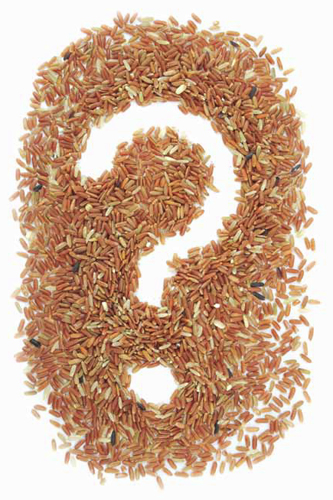Ask Elesha | The Good, the Bad and the In-between
The truth behind some nutritional myths
We have debunked many nutrition myths in past articles. There are a few more worth mentioning, especially with so many trying to stick to New Year’s resolutions to be healthier. A lot of foods are seemingly healthy but may not have any nutritional value. Conversely, some foods can be good for you that may be perceived as unhealthy.
Beware of these nutritional pitfalls:
 • Brown rice is much better for you than white rice. While brown rice has a little more fiber than white, it only has one gram of fiber per serving. The calories and carbohydrate content are the same for brown and white rice. Try a better choice such as bulgur, barley or quinoa; these grains have a higher fiber and protein content. Google interesting, quick and easy recipes for these nutrient dense whole grains.
• Brown rice is much better for you than white rice. While brown rice has a little more fiber than white, it only has one gram of fiber per serving. The calories and carbohydrate content are the same for brown and white rice. Try a better choice such as bulgur, barley or quinoa; these grains have a higher fiber and protein content. Google interesting, quick and easy recipes for these nutrient dense whole grains.
• Hummus is a healthy snack. While hummus is not necessarily bad for you, it does not contain a lot of fiber or protein, making it low in nutritional value and high in calories and carbohydrates. Plus, it’s very easy to overeat—three tablespoons is an appropriate portion. And, beware: If you’re dipping pita in hummus, you’re getting a double dose of carbs and calories. If you love hummus, enjoy it as a spread on a sandwich or dip with veggies instead of pita bread.
• Fiber One brownies are a healthy alternative to cookies or regular brownies. While Fiber One brownies are appropriately portioned at 90 calories each and can make a tasty treat, the fiber is not the same as traditional fiber found in whole grains, vegetables and fruit. The fiber used in these brownies is derived from chicory root or insulin. These sources of fiber are not bad for you, but do not provide the same health benefits as traditional fiber sources.
• Red meat raises cholesterol and should be avoided in a healthy diet. You can enjoy lean sources of red meat. Lean beef (lower in saturated fat) can be leaner than certain cuts of turkey. Look for cuts with “loin” or “round” in the name. Ninety-three percent lean ground meat, filet and flank steak are all good examples.
• Popcorn is junk food. It depends on how it is prepared. Beware of most movie popcorn, as it is prepared in saturated, fatty oils. Popcorn is a whole grain (three grams of fiber per serving), and prepared at home in unsaturated oils like olive or canola oil, it can be a healthy, filling snack. Also, try convenient 100-calorie microwaveable bags, which come in a variety of flavors.
• Sugar is always bad. Try to buy foods unsweetened—plain yogurt for example, and add your own sugar. It’s only four calories per gram so there’s nothing wrong with adding a pack or two to your yogurt or coffee, costing you only 12 calories. Beware of companies that pre-sweeten foods because you’re getting a lot more than if you added it yourself. It only takes a small amount to get the desired sweet taste.
• Turkey bacon is better for you than regular bacon. Actually, turkey bacon is higher in sodium than regular bacon. All bacon is only about 30 to 35 calories per slice. Go ahead and enjoy a couple of slices but choose center-cut bacon that is a little lower in saturated fat. Eat turkey bacon only of you prefer the taste.
A healthy, balanced diet should include all the foods you love.
You’ve got questions? Our nutritionist, Elesha Kelleher, LDN, RD, MPH has the answers.
E-mail her at [email protected]
